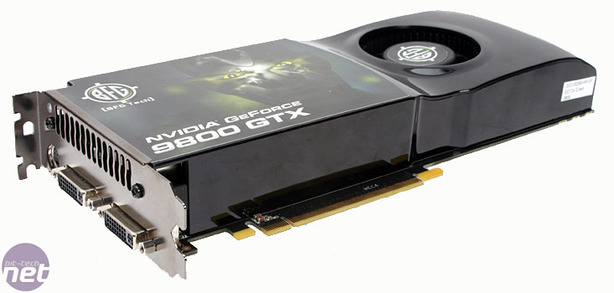How we tested
As always, we did our best to deliver a clean set of benchmarks, with each test repeated three times and an average of those results is what we’re reporting here. In the rare case where performance was inconsistent, we continued repeating the test until we got three results that were consistent.Nvidia Test System
- Nvidia GeForce 9800 GTX 512MB - operating at 675/1,688/2,200MHz using Forceware 174.53 beta
- XFX GeForce 9800 GX2 600M 1GB - operating at 600/1,500/2,000MHz using Forceware 174.53 beta
- Nvidia GeForce 8800 GTX 768MB - operating at 575/1,350/1,800MHz using Forceware 169.44 beta
- Nvidia GeForce 8800 GTS 512MB - operating at 650/1,625/1,940MHz using Forceware 169.44 beta

ATI Test System
- ATI Radeon HD 3870 X2 1GB - operating at 825/1,800MHz using Catalyst 8.3 WHQL
Games Tested
We used the following versions of the games listed to evaluate the performance of these video cards:- Crysis, version 1.2 (64-bit) with DirectX 10 and DirectX 9.0
- Call of Duty 4: Modern Warfare version 1.5 with DirectX 9.0
- World in Conflict, version 1.007 with DirectX 10
- BioShock, version 1.1 with DirectX 10
- Supreme Commander, version 3280 with DirectX 9.0
- The Elder Scrolls IV: Oblivion, version 1.2 with DirectX 9.0
- Enemy Territory: Quake Wars, version 1.4.0

MSI MPG Velox 100R Chassis Review
October 14 2021 | 15:04









Want to comment? Please log in.